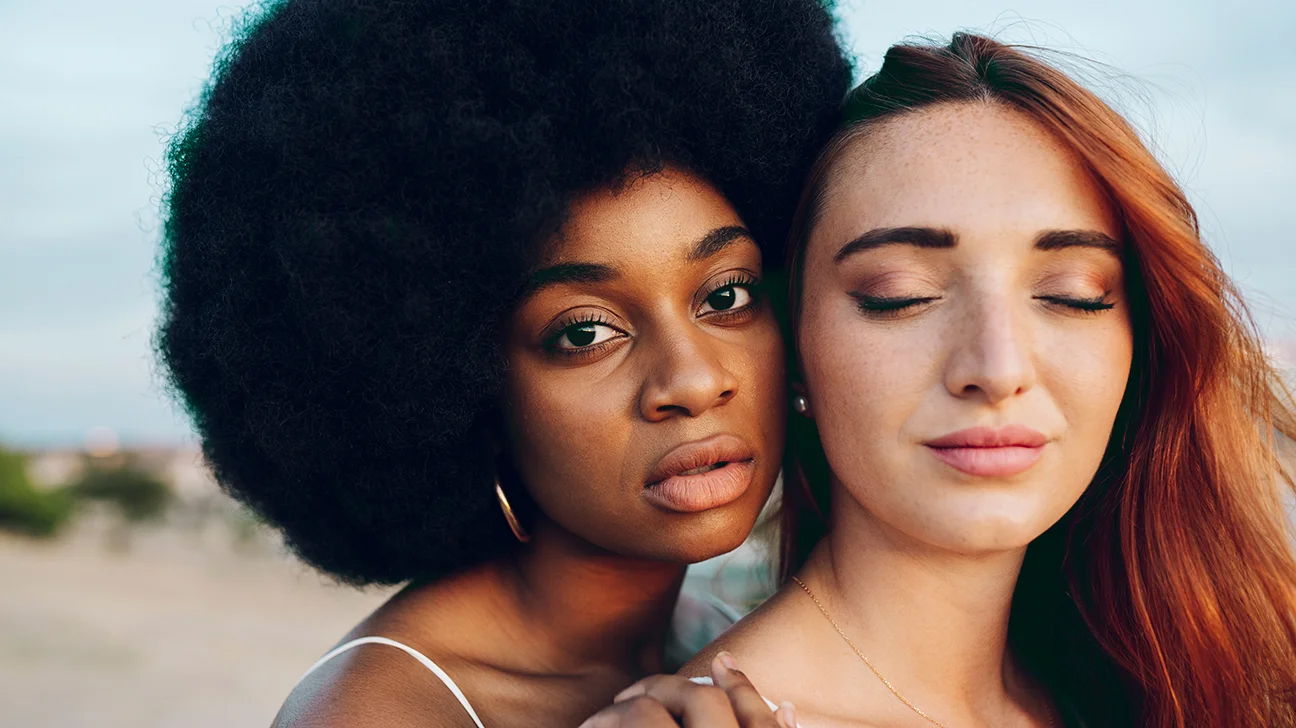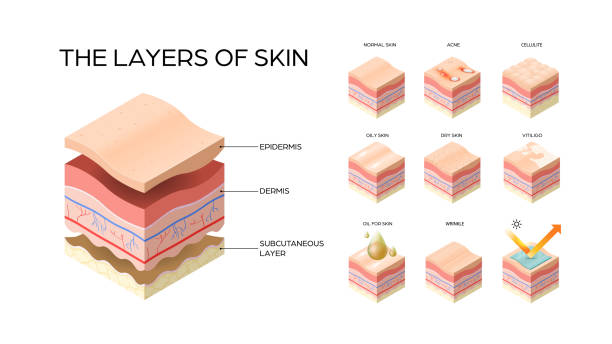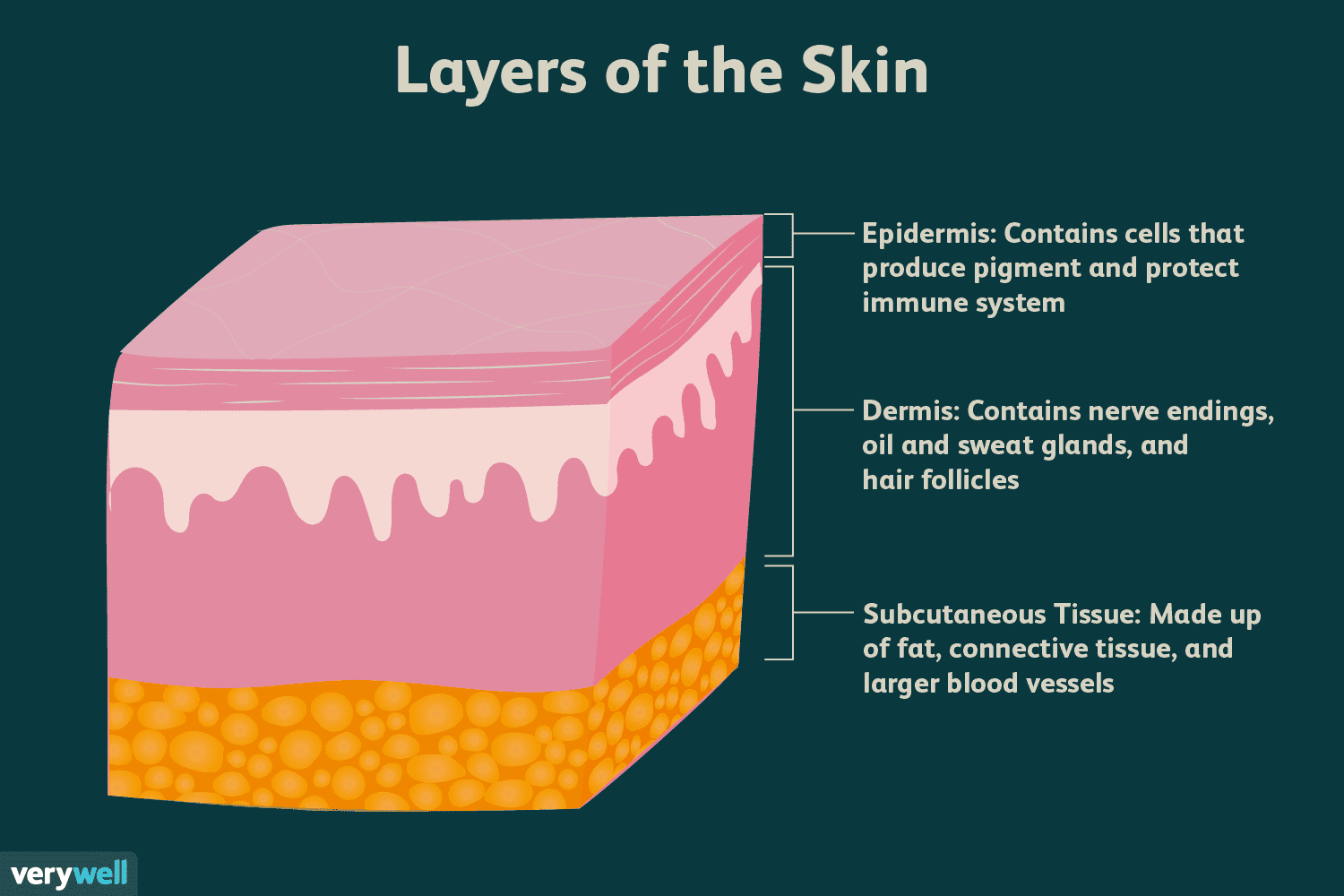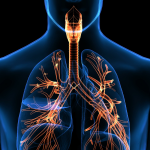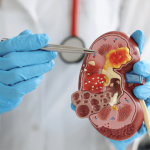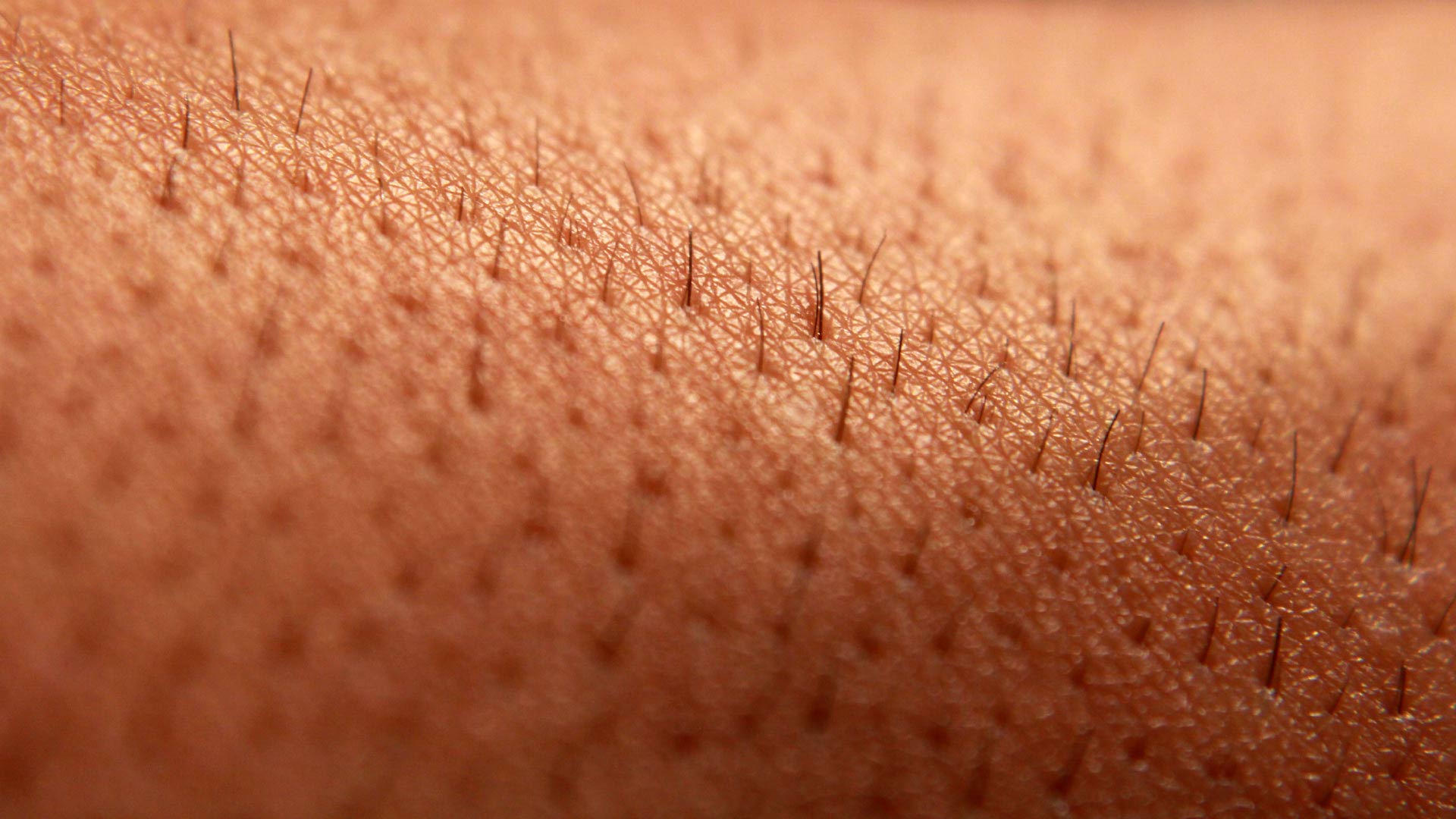
What is skin?
Although you may not realise it, your skin is your largest organ. Learn more about its parts, how it functions and how to keep it healthy.
Parts of the skin
Skin covers your body and has three layers:
The top layer is the epidermis (outer layer). This is a thin layer. It provides a waterproof barrier for your body. It also contains cells (melanocytes) that gives your skin colour.
The dermis is the middle layer of skin. It is much thicker than your epidermis. It contains tough connective tissue, blood vessels, nerves, hair follicles and sweat glands.
Beneath the dermis is the subcutaneous layer. This layer contains fat and large blood vessels.
Functions of skin
Your skin has many purposes.
Skin is water-resistant and protects you from the weather.
Skin allows you to feel things – heat, cold, touch, pain, and vibration.
Skin protects you against infection, and is part of the body’s immune system.
Skin helps control your body temperature. When blood flow to your skin increases is helps to release heat from your body. When blood flow to your skin decreases it helps to keep warmth in. How much moisture evaporates from your skin, also affects your body’s temperature.
Skin absorbs ultraviolet light from the sun, which is needed to make vitamin D. Vitamin D is important for good bone health. Most Australians can get enough vitamin D through safe exposure to the sun. The Sunshine Map tells you how much sunlight you need depending on where you live.
Ageing and your skin
As you age, your skin changes. Most notably there are less elastic and collagen fibres and more obvious wrinkles. These changes can be increased by too much sun exposure.
Your ability to regulate your temperature through your skin also decreases as you get older. This means you are more likely to get heatstroke or hypothermia than a younger person. You are also more likely to become sunburnt.
Your skin also becomes dryer as you age due to less sebum (oil) being made.
Your hair will thin as you age. This is because you have fewer active hair follicles.
Skin problems
Problems with your skin can be genetic or they can be caused by other factors.
Skin conditions
Skin conditions affect people differently. Some common skin conditions include:
- acne
- skin cancer
- cellulitis
- eczema or dermatitis
- pruritis
- psoriasis
- rosacea
- urticaria or hives
- warts
Skin conditions can be caused by:
- allergies or irritants
- insect bites
- bacterial or viral infections
- stress
- cold (for example, chilblains)
- heat (for example, heat rash)
- hormonal imbalance
- a build-up of sweat or oil on the skin
Skin conditions can also be genetic, and sometimes occur due to problems with the immune system. Smoking, drinking alcohol, and some medications may worsen your skin condition.
Moles, lesions, and skin cancer
Skin cancer occurs when skin cells are damaged, for example, by too much ultraviolet light from the sun. You may have a higher risk of skin cancer if:
- you have a family history of skin cancer
- you have fair skin
- you have a weakened immune system
Common skin cancers include:
- basal cell carcinoma
- squamous cell carcinoma
- melanoma
You might have freckles, moles, and other lesions such as skin tags on the surface of your skin. Most moles and marks on your skin are harmless, or benign. Some types of moles, have a higher chance of developing into cancer. These moles may:
- change size or shape
- change colour
- weep or bleed
- appear crusty or flaky
See your doctor if you have any suspicious skin lesions.
Tips for healthy skin
To keep your skin healthy:
- protect it from sun damage – wear sunscreen regularly
- don’t smoke
- treat your skin well by keeping it moisturised
- eat a balanced diet
- manage your stress
- check your skin for any suspicious moles at least once a year
How to protect your skin from the sun
Exposure to ultraviolet (UV) radiation from the sun is the most common cause of skin cancer.
Skin cancers are the most common types of cancer in Australia. If you need to go out in the sun, it’s important to protect your skin if the UV index is 3 or above.
You can find your local UV Index by going to the Bureau of Meteorology or MyUV.
To protect your skin, remember to:
- Slip on protective clothing
- Slop on SPF30+ sunscreen
- Slap on a hat
- Seek shade
- Slide on sunglasses
Read more about skin cancer prevention.
Getting your skin checked
If you experience any issues with your skin or notice any unusual moles, you should see your doctor. Early treatment of cancers can provide a better outcome.
Treating skin conditions early can reduce the impact on your mental health and reduce the risk of scarring.
If you are at high risk of skin cancer, you should visit your doctor for a skin check every 6 months.
Your doctor can:
- conduct a skin check
- take a skin sample (biopsy) to help diagnose skin problems
- treat or remove any skin cancers
- treat and manage other skin conditions
Your doctor can also refer you to a dermatologist (skin specialist) if needed.
